It was early, just before sunrise, when we revved up the bikes and set off from Vegas, heading west toward Death Valley. There’s something about a day on the open road—especially on a motorcycle—that feels like freedom you can’t find anywhere else.
With only a backpack each and the promise of desert adventure ahead, we decided to take the scenic route. As the city lights faded behind us and Red Rock Canyon came into view, I knew this ride would be special.
I’ve been out this way before in a car, but there’s a thrill on two wheels, feeling the desert wind and watching the colors change as the sun rises over the valley. This wasn’t just another road trip; it was a chance to leave the world behind, just us, our bikes, and a wild stretch of road.
Scenic Route through Route 160 and Mountain Springs Saloon
There are a few ways to reach Death Valley from Las Vegas, but we chose the scenic route. Head out on Route 160, which winds through the Red Rock area and the small town of Pahrump.
Along the way, consider a stop at the Mountain Springs Saloon, a historic watering hole and a favorite spot for bikers and road-trippers alike. Enjoy a cold drink, meet a few locals, and get a taste of this classic desert saloon.
Onward to Death Valley: Turning at W Bell Vista Ave
Once you reach Pahrump, keep an eye out for the turn onto W Bell Vista Ave, which isn’t well-marked but will lead you straight to the California border and into Death Valley Junction. Furnace Creek in Death Valley is just a short drive away from here.
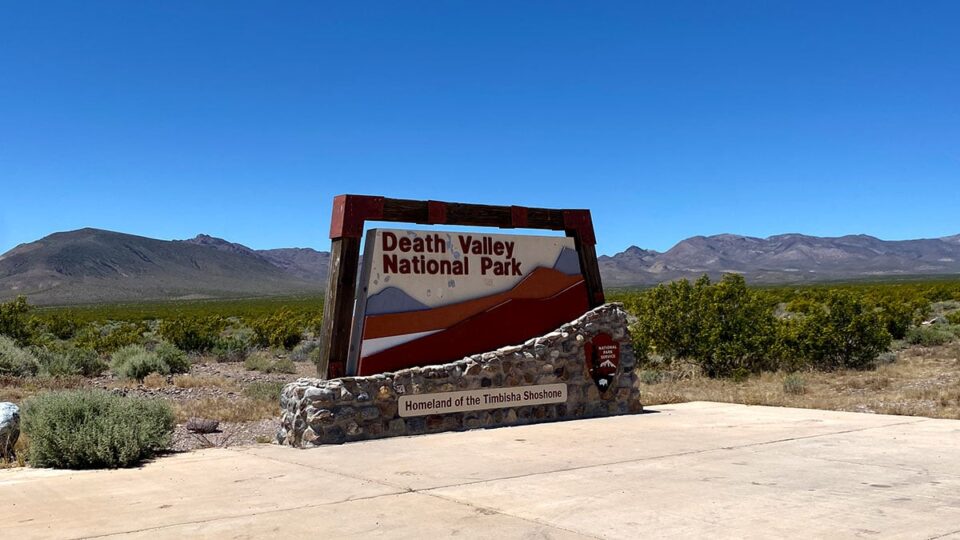
Exploring Death Valley in a Day
If you’re only visiting for the day, you’ll want to choose your spots wisely—Death Valley is enormous and can easily take three days to explore fully. But to make the most of it in a single day, I recommend starting at Dante’s View, continuing to Badwater Basin, then heading to Artist’s Palette. If you still have time, venture out to the Mesquite Flat Sand Dunes.
Dante’s View: A Breathtaking Panorama
Dante’s View is one of those places that takes your breath away the moment you arrive. Perched high on the Black Mountains, it offers a sweeping panorama of Death Valley below, stretching out like a vast, painted landscape.
Standing there, with the valley floor nearly a mile beneath you, the scale of Death Valley comes into full perspective. The colors of the salt flats, mountains, and sky blend together in a way that feels surreal.
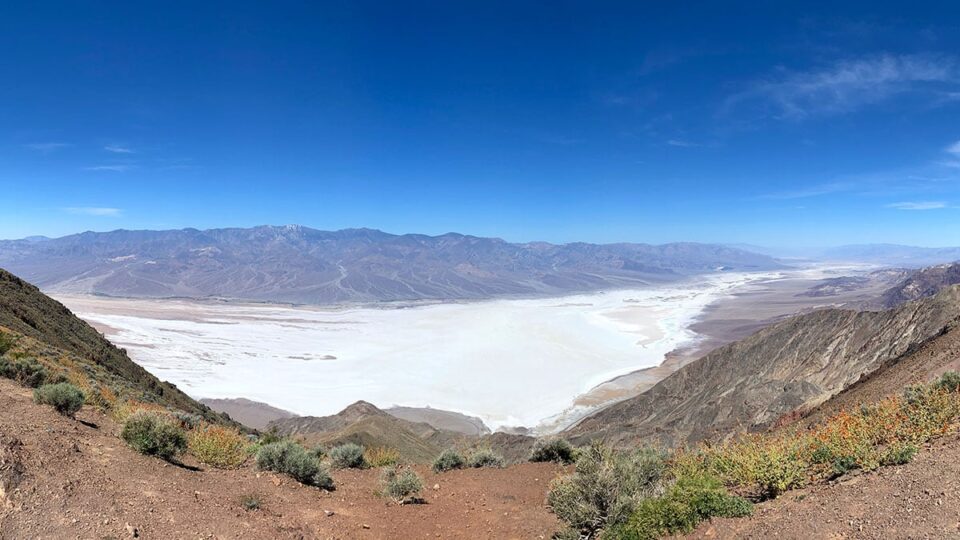
This is a spot that truly lives up to the phrase “words can’t describe it”—no photo quite captures how it feels to take in that endless view, the wind against your face, with the sun rising or setting over the valley.
For me, Dante’s View feels almost sacred, a place that humbles you with its beauty and vastness.
From Dante’s View, descend into the valley, where Badwater Basin awaits. This vast salt flat, marked by crystallized salt formations, stretches beneath the mountain’s shadow. Be prepared for temperatures that can soar, even outside the summer months. The salt plains offer a landscape of surreal beauty, stark and dazzling in the desert sun—an absolute can’t-miss.
Badwater Basin: A Salted Wonderland
Badwater Basin, the lowest point in North America at 282 feet below sea level. As you step onto the salt flats, you’re immediately struck by the stark, otherworldly landscape—miles of crystallized salt stretching out beneath your feet, gleaming under the sun.
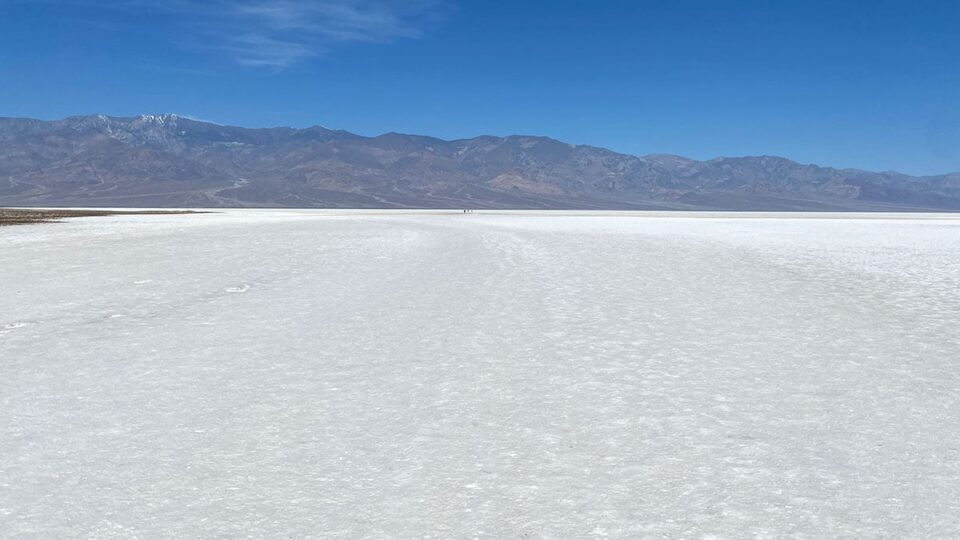
Walking out onto the salt flats, it feels as though you’ve stepped into another dimension, with white, hexagonal formations spreading in all directions.
It’s a harsh environment, yet undeniably beautiful, a place where you can feel the intensity of the desert’s heat and isolation. Whether you’re there to take photos or just to experience the surreal environment, Badwater Basin is a must-see that leaves a lasting impression.
Artist’s Palette: A Canvas of Color in the Desert
After the thrill of Badwater Basin, we made our way to the Artist’s Palette. This place is as breathtaking as it sounds—a natural, open-air canvas with vibrant splashes of color across the rock formations. The narrow, winding road leading there is an adventure in itself, each turn revealing new hues that make you feel like you’re in an otherworldly art gallery.
Parking the bikes, we took a moment to soak in the view. The colors—greens, pinks, purples, and blues—are caused by mineral deposits, but they look like they were brushed on by nature’s own hand.
The best time to catch Artist’s Palette is in the late afternoon when the light brings out the intensity of each color. Standing there, I couldn’t help but marvel at how something so rugged could look so delicately beautiful.
If you’re a photographer, this is a spot you’ll want to linger in; every minute brings subtle changes to the colors as the sun moves across the sky. It’s mesmerizing and peaceful, a sight that feels both surreal and grounding at the same time. (unfortunately, the author’s phone died just when it was the right time to take those beautiful pictures. I would appreciate it if you would like to share them with us or just wait on our next trip…)
Mesquite Flat Sand Dunes: A Desert Landscape Straight Out of a Dream
From Artist’s Palette, we rode on to Mesquite Flat Sand Dunes, a place where the desert opens up into an endless stretch of golden sand. There’s something so calming about the dunes, but they’re deceptive—up close, the scale of each sandy wave feels massive, especially as the sun hits them and casts sweeping shadows across the landscape.
Walking out onto the sand, I felt the heat coming off the ground, so hot you could almost feel it through your boots. It’s one of those places that forces you to slow down and take it all in.
For the best experience, try to reach the dunes in the morning or late evening when the heat is bearable, and the shadows make for incredible photos.
Hiking up to the top of the tallest dune was a workout, but every step was worth it for the view from the peak, with rippling sands stretching as far as the eye can see.
Just remember to bring extra water and be prepared for the sand to get everywhere—it’s all part of the adventure in this surreal desert landscape.
Ending the day here felt like a fitting close, leaving us with that classic desert memory: endless stretches of sand, open skies, and the quiet solitude that only the desert can offer.
With each stop, Death Valley revealed a new layer of itself, making the ride back to Vegas feel like the end of a journey through nature’s wildest, most beautiful artwork.
Where to Stay in Death Valley
Death Valley National Park offers two main options for overnight stays: “The Inn at Death Valley” and the family-friendly “Ranch in Death Valley.”
The Inn, a luxury resort, provides refined rooms and stunning views—a perfect choice if you’re after a more indulgent experience.
The Ranch offers various accommodations, from standard rooms to Casitas with patios, ideal for a cozy retreat under the desert stars.
Tip: Prices can vary between $200-600 per night, depending on the day and season, so plan accordingly. While these accommodations are very nice, they don’t fully capture the luxury some Las Vegas visitors might expect. Still, they provide a solid base for exploring Death Valley. If you are on a budget, there are a few hotels in Parhump, which is about 40 minutes away, or if you are travelling from California, Bishop, CA will be your next best thing at a lower price point.
Amenities at the Ranch in Death Valley
If you stay overnight at the Ranch, you’ll find great amenities like a pool, a couple of restaurants, an ice cream parlor, and a quaint garden where you can escape the sun.
For those brave enough to take on Death Valley in the summer months, brace yourself—temperatures regularly reach dangerous levels.
For a more comfortable visit, plan for spring or deep winter when temperatures are more forgiving. Spring brings wildflowers blooming across the desert, while winter offers mild 72-degree days, perfect for exploring.
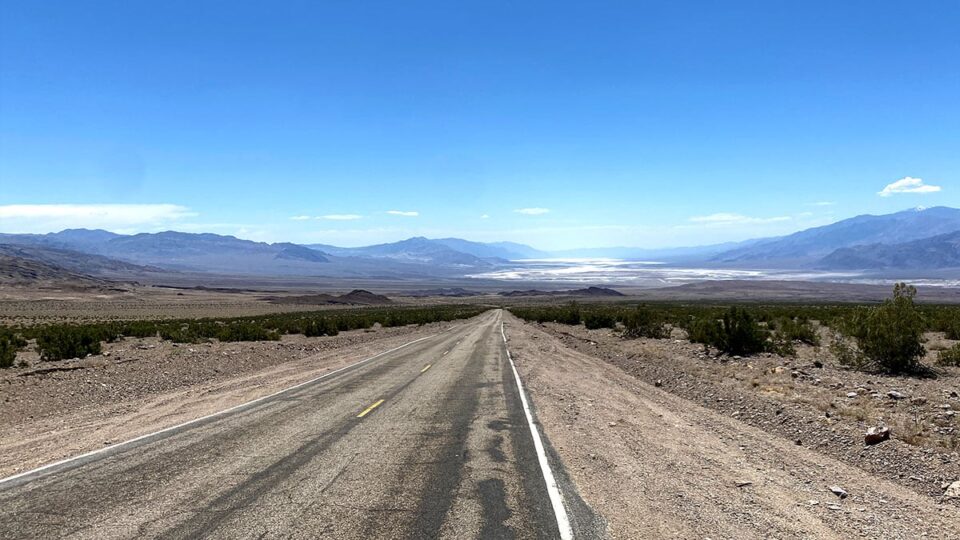
While you’re exploring the edges of Death Valley, consider adding a detour to the China Ranch Date Farm, a lush, hidden oasis tucked away near the park’s southern border.
This family-run farm offers a completely different side of the desert, with towering date palms, scenic trails, and fresh date shakes that have become a local legend.

It’s an easy and rewarding side trip that pairs perfectly with your Death Valley adventure, giving you a taste of desert life that’s as sweet as it is unexpected.
Important Facts and Safety Tips for Visiting Death Valley
- Gas Up: Death Valley is remote, with few places to refuel. Top off your tank before entering the park, and keep extra fuel if possible.
- Hydration: Death Valley’s heat is intense, especially in summer. Bring plenty of water—at least a gallon per person per day is recommended—and pack ice if you plan to be outside for extended periods.
- Check Cell Service: Cell service can be spotty or nonexistent. Download maps and plan your route ahead of time to avoid getting lost.
- Keep an Eye on the Weather: Flash floods can occur, especially in spring, so check the forecast before you head out.
- Plan for Heat: Bring sunscreen, a hat, and light, protective clothing. Even in cooler months, the sun can be intense.
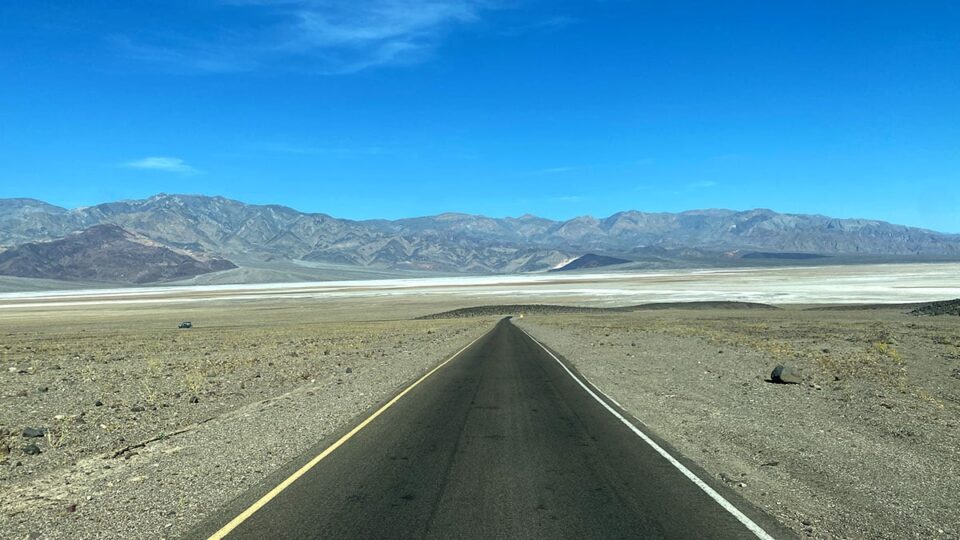
Whether you’re in it for the sweeping vistas, surreal salt flats, or just a taste of untamed wilderness, a day or overnight trip to Death Valley is an adventure worth every mile. Just remember—out here, you’re in the heart of one of the hottest places on earth, so respect the desert and take the precautions that will let you enjoy it safely.

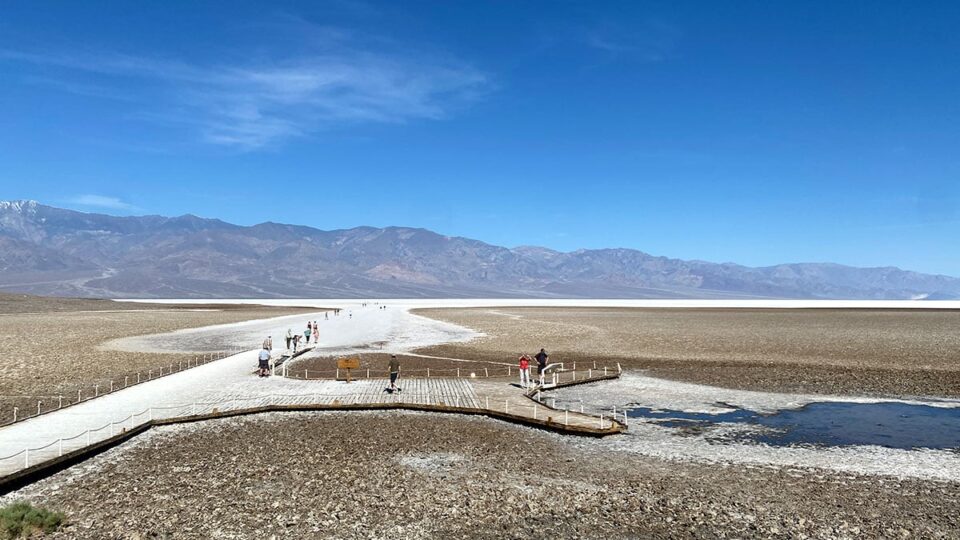
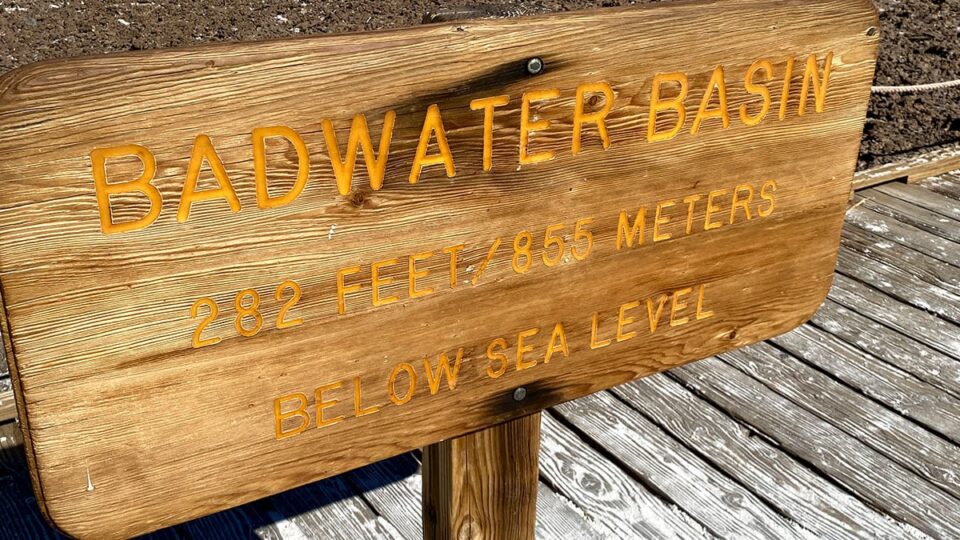
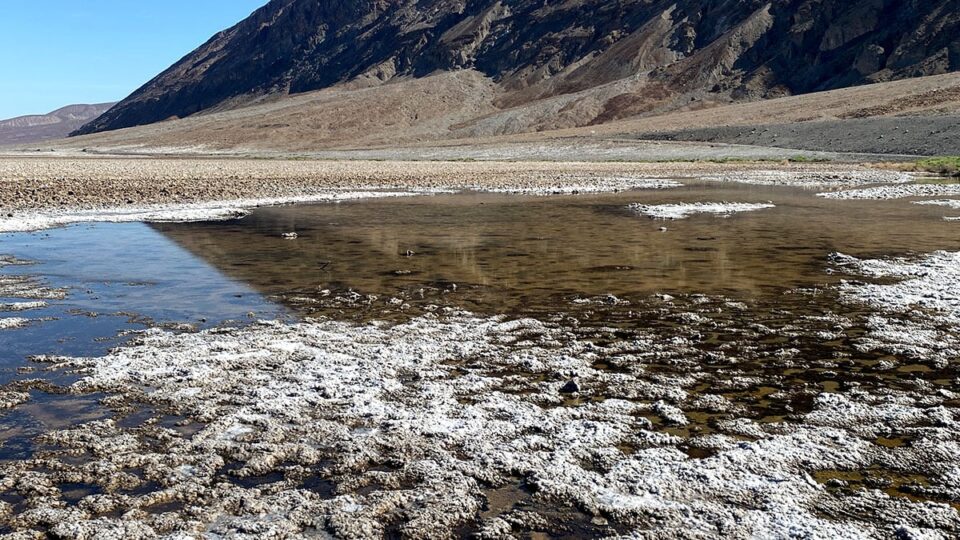

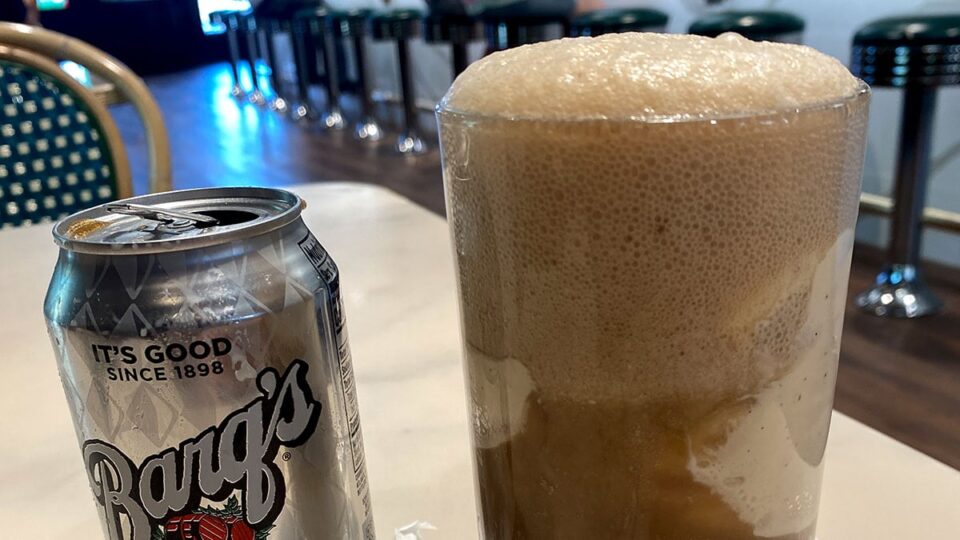
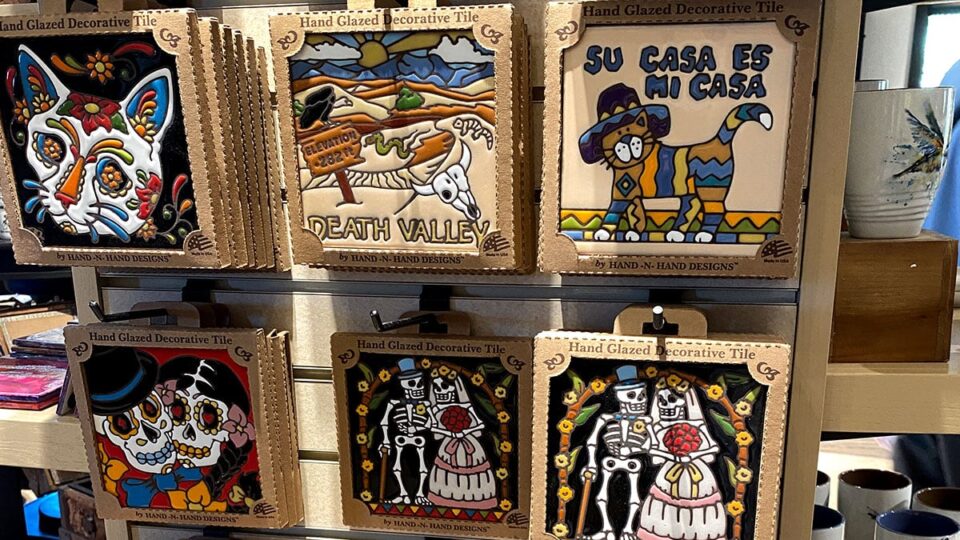

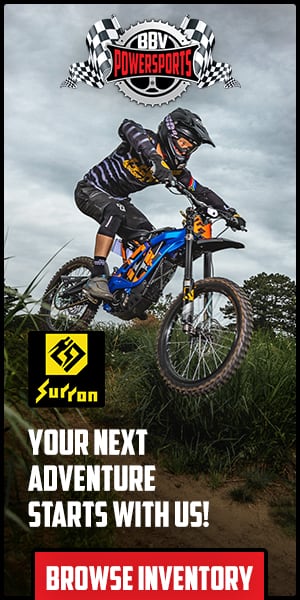


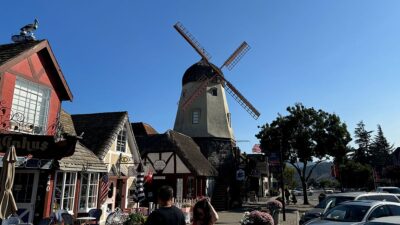

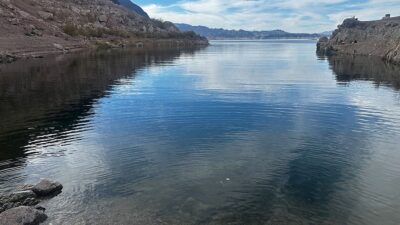
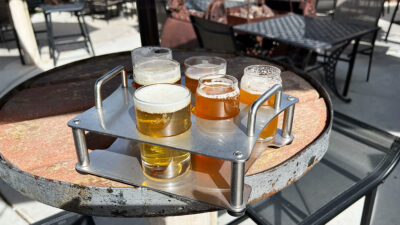


TALK TO THE AUTHOR
If you’ve spotted something we missed, found a typo, or have any suggestions,
we’d love to hear from you!